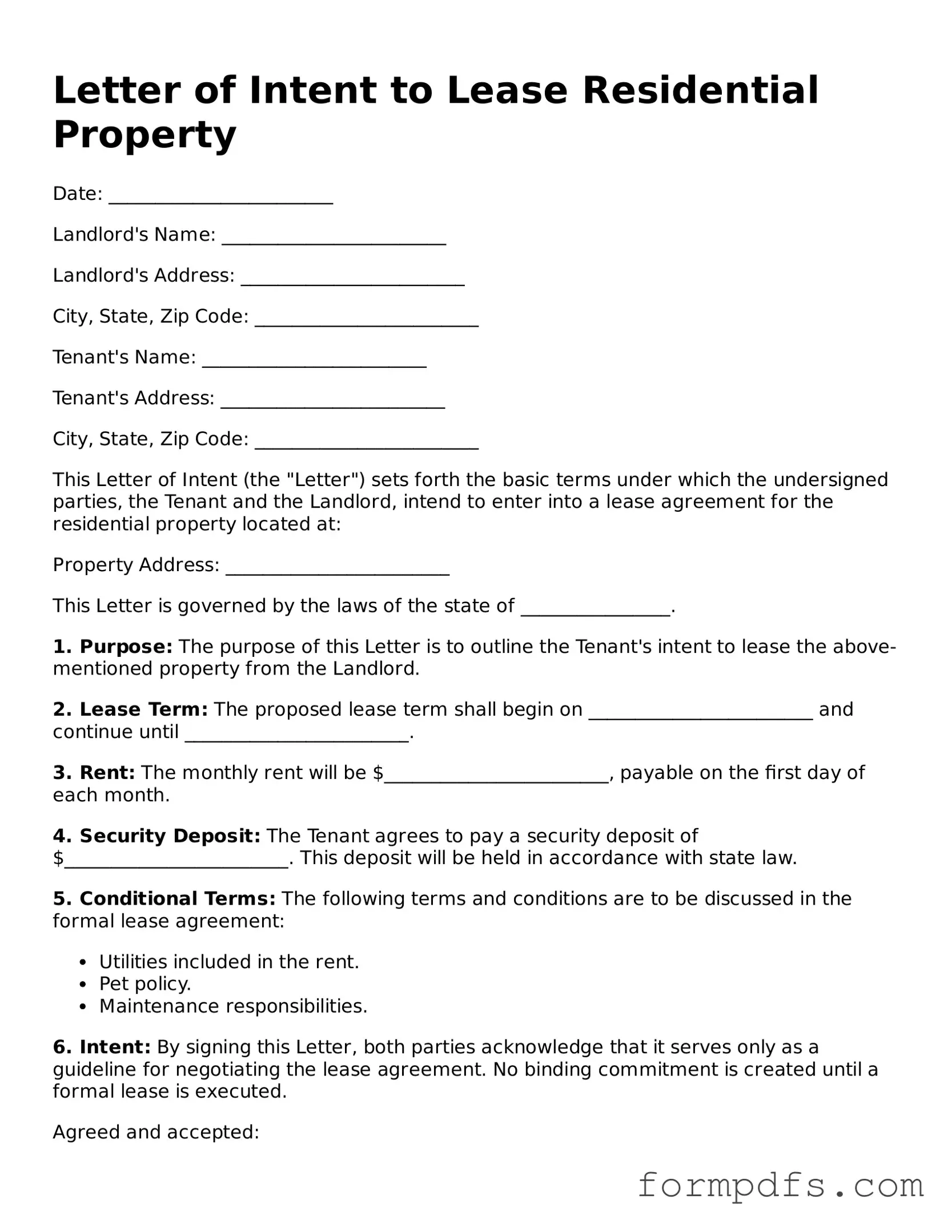What is a Letter of Intent to Lease Residential Property?
A Letter of Intent to Lease Residential Property is a preliminary document that outlines the basic terms and conditions under which a landlord and a prospective tenant agree to lease a residential property. This letter serves as a starting point for negotiations and indicates the intention of both parties to enter into a formal lease agreement in the future.
Why should I use a Letter of Intent?
Using a Letter of Intent can help clarify the expectations of both the landlord and tenant before entering into a binding lease agreement. It provides a written record of the key terms, such as rental price, lease duration, and any special conditions. This can prevent misunderstandings and foster a smoother negotiation process.
Is a Letter of Intent legally binding?
Typically, a Letter of Intent is not legally binding. It is meant to express the intent to negotiate a lease rather than to create enforceable obligations. However, certain provisions within the letter may be binding if explicitly stated, so it’s important to review the document carefully.
What key terms should be included in a Letter of Intent?
A comprehensive Letter of Intent should include essential details such as the proposed rental amount, lease term, security deposit requirements, maintenance responsibilities, and any specific conditions like pet policies or renovations. Including these terms can help both parties understand their responsibilities and expectations from the outset.
Can I change the terms after signing the Letter of Intent?
Yes, the terms outlined in a Letter of Intent can be negotiated and changed before a formal lease agreement is signed. This document is meant to facilitate discussion, and adjustments can be made based on feedback from either party. Open communication is key during this process.
How does a Letter of Intent differ from a lease agreement?
A Letter of Intent is a preliminary document that outlines the intention to lease and key terms, while a lease agreement is a formal, legally binding contract that details all rights and obligations of both parties. The lease agreement will typically include more comprehensive terms and conditions than the Letter of Intent.
Is there a specific format for a Letter of Intent?
While there is no strict format for a Letter of Intent, it should be clear and organized. Start with the names of both parties, followed by the property address and the proposed terms. Using bullet points or numbered lists can enhance readability. The letter should conclude with a statement indicating the intent to negotiate further.
Who should prepare the Letter of Intent?
Either the landlord or the prospective tenant can prepare the Letter of Intent. However, it’s often beneficial for the party with more experience in leasing to draft it. If you’re unsure, consider collaborating or seeking advice from a real estate professional to ensure all necessary terms are included.
What happens after signing the Letter of Intent?
Once the Letter of Intent is signed, both parties can begin drafting a formal lease agreement based on the terms outlined in the letter. This is the time to finalize details and address any outstanding issues. It’s essential to ensure that both parties are satisfied before moving forward with the lease.
Can I withdraw my interest after signing the Letter of Intent?
While a Letter of Intent is generally not binding, withdrawing your interest may still affect your relationship with the other party. If you decide to back out, communicate your decision as soon as possible to maintain goodwill. This is especially important if you have already begun negotiating a lease agreement.
